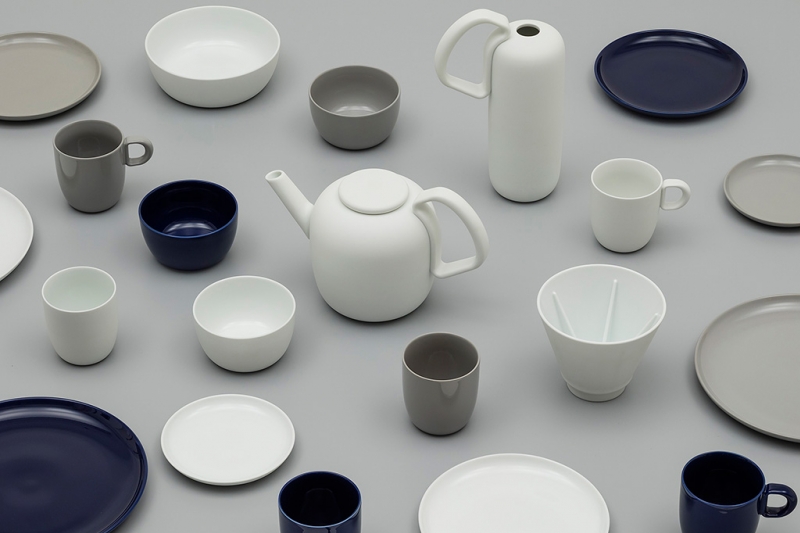Interview: Leon Ransmeier
American product designer Leon Ransmeier describes the products for 2016/ as ‘tools’. Whether furniture for the offices, chairs for restaurants or tableware, functionality is an important consideration. His collection of porcelain for 2016/ was produced in cooperation with Hataman Touen pottery and is a reflection on this significant characteristic of his work.
- Why did you choose to incorporate the ‘tool’ element into your porcelain collection?
The reference to tools resulted from my interest in the sensation of grasping tableware. From the outset I wanted to make objects that were comfortable and pleasurable to hold. A tool can be loosely defined as a thing held in the hand and used for a specific task. I made the handles on the coffee pot, teapot and vase a somewhat literal, recognisable, tool-like form. However, the design of the feet for all the plates, bowls and cups were also approached with the same goal. This is about finding a shape that is inviting and pleasing to hold while remaining open to many useful interactions.
- Why is comfort, relating to the holding and use of tableware specifically, important in your work?
I’m interested in objects that surprise and engage people. Comfort is always relative to the situation. Some instances demand greater comfort than others. When you pick up a bowl or a plate you expect to feel a foot on the bottom with a hard-edged profile. These feet are created for the manufacturing process; they keep glazed portions of the items from sticking to the kiln shelves during firing. What is useful for the production of the object has little to do with its daily use. My designs for 2016/ require great care to produce, but are also comfortable in the hand.
The relationship between comfort and work fascinates me. Hand tools such as saws or hammers are used with repetitive force and so the handles require a comfortable grip. Work chairs are highly engineered to achieve the maximum level of comfort. It is fascinating that western culture often puts more effort into making work situations comfortable than general living situations.
- Hataman Touen excels in producing very fine (thin) porcelain. Yet this isn’t a characteristic of your collection. Why is that?
The high quality of porcelain produced in Arita does allow for vessels to have very thin walls. Hataman Touen pottery even use a process of carving the porcelain after casting in order to create translucent decorative patterns. The porcelain in my collection averages around 3mm, the handles and lids are hollow and were given volume for tactile reasons. Furthermore, I wanted to make things that didn’t feel too precious. A very thin teacup or wine glass creates a more rarefied experience, which can of course be beautiful, but I hope these objects feel more common than that.
- What are your main objectives with this collection?
The 2016/ project has historic cultural importance, but it is also a critical opportunity for the potteries and distributors involved who have taken great risks in the development of these new items. I want people to enjoy using these objects for a long time, and I hope that means it's good business for everyone.
The last product photo by Yasunori Shimomura









